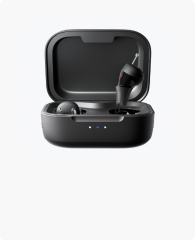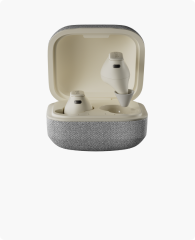Decibels play a vital role in measuring sound levels and understanding the impact of noise on our daily lives. Whether you're curious about how decibel levels compare or seeking tools to measure sound accurately, this guide will provide all the insights you need. Additionally, we will explore how Cearvol hearing aids can help people with hearing difficulties adapt to various noise levels seamlessly.
🚀 Navigate This Post
You may also be interested in:
- Tinnitus and Hearing Loss: What's the Connection?
- Comprehensive Guide: Everything You Need to Know about Hearing Aids
- 7 Great Tips for First Time Hearing Aid Users
Part 1: What Is a Decibel and Its Importance?
Understanding what a decibel is forms the foundation for exploring sound measurement. In essence, a decibel is a unit of measurement that expresses the intensity of sound. This logarithmic scale allows us to compare different sound levels effectively.
1. Decibel Meaning and Scale
The decibel (dB) scale is used to measure how loud a sound is. It helps us understand the intensity or strength of different sounds.
-
A normal conversation is usually around 60 dB.
-
A loud rock concert can be as high as 120 dB or more.
The dB scale works in a special way. Every increase of 10 dB means the sound is 10 times more intense. So a 70 dB sound isn't just a little louder than 60 dB — it's actually 10 times stronger.
Our ears are very sensitive. We can hear sounds as quiet as 0 dB, which is near total silence.
2. Why Decibel Levels Matter?
Decibel levels are crucial for understanding the potential risks of noise exposure. Prolonged exposure to sounds above 85 dB can damage hearing over time. For instance, environments like construction sites or busy airports often exceed safe noise thresholds, making hearing protection essential. A detailed decibel level chart can help you identify safe listening levels and protect your ears effectively, whether you're at work, home, or enjoying recreational activities.

Diamond X1 - Best Hearing Aids with Bluetooth
Newcomer Price
$249.99 $309.99
- ✔ Adaptive sound modes for clear hearing.
- ✔ Bluetooth for calls & streaming.
- ✔ App-controlled, customizable adjustments.
- ✔ Rechargeable & fast charging.
- ✔ Ideal for mild to moderate hearing loss.
Part 2: Exploring Decibel Level Charts
To understand how sound impacts us, it's important to consult a decibel comparison chart. These charts visually represent the intensity of various sounds, from whispers to jet engines.
1. Noise Decibel Chart Examples
A typical noise decibel chart includes:
- 0 dB: Threshold of hearing – the faintest sound a human ear can detect.
- 20 dB: Rustling leaves – very soft sounds typically found in quiet natural settings.
- 30 dB: Whisper – a soft conversation held in a library or other silent spaces.
- 40 dB: Refrigerator hum – gentle background noise in a quiet room.
- 50 dB: Moderate rainfall – calm and consistent ambient noise.
- 60 dB: Normal conversation – typical speech in a quiet room.
- 70 dB: Vacuum cleaner – steady noise that may become annoying over time.
- 80 dB: Busy city traffic – loud but not immediately harmful.
- 90 dB: Lawnmower – prolonged exposure may start causing hearing damage.
- 100 dB: Chainsaw or handheld drill – very loud, hearing protection is recommended.
- 120 dB: Rock concert or thunderclap – extremely loud and potentially painful.
- 140 dB: Jet engine – immediate danger to hearing at close proximity.
- 160 dB: Fireworks or gunshot – sounds at this level can cause instant hearing loss.

2. How to Use Decibel Charts?
Using a decibel level chart can help you recognize which environments may be harmful to your hearing. For instance, prolonged exposure to 85 dB, such as heavy traffic or a noisy restaurant, can lead to gradual hearing loss over time. At 90 dB, such as from a lawnmower, damage may begin after about two hours of exposure. If you're around sounds measuring 100 dB, such as a chainsaw, hearing damage can occur in as little as 15 minutes. Exposure to 120 dB, like at a rock concert, can cause immediate pain and potential hearing loss within minutes. Parents should pay particular attention to monitoring sound levels at home to protect children from potential harm caused by loud toys, televisions, or appliances. Recognizing these thresholds and using appropriate ear protection is crucial for preserving hearing health.
Part 3: Measuring Sound with Decibel Meters
Accurately measuring sound levels requires reliable tools like decibel meters. These devices are essential for professionals and everyday users.
1. Decibel Meter and Its Functionality
A decibel meter, also known as a sound level meter or decibel reader, measures sound intensity in a given environment. Modern decibel meters often include digital displays and additional features for precise readings. Some advanced models even sync with smartphones to provide real-time data tracking and analysis.
2. Applications of Decibel Readers
From monitoring workplace noise levels to ensuring compliance with regulations, decibel readers are versatile tools. They are also useful for personal use, such as monitoring noise in residential areas or determining the best settings for a home theater system. For musicians and audio engineers, decibel readers can help ensure optimal sound levels during performances and recordings.
Part 4: Understanding Decibel Scales and Comparisons
Decibel scales allow us to compare sound levels effectively. These scales are designed to accommodate the wide range of sound intensities the human ear can detect.
1. How Does Decibel Scales Work?
The decibel scale's logarithmic nature makes it easier to represent large differences in sound intensity. For example, a sound measuring 80 dB is ten times more intense than one measuring 70 dB. This feature is particularly useful in environments where varying sound levels need to be managed, such as hospitals or educational institutions.
2. Decibel Comparison Chart Insights
Decibel comparison charts highlight the relationship between sound intensity and perceived loudness. For example, a vacuum cleaner (70 dB) is significantly louder than a refrigerator hum (40 dB). Understanding these comparisons can help you choose appropriate hearing protection or adjust volume levels to prevent discomfort and hearing damage.
Part 5: Practical Tips for Noise Management
Understanding decibels isn't just about charts and meters; it's about making informed decisions to protect your hearing.
1. Using Decibel Counters Effectively
Decibel counters are great for monitoring noise levels in real-time. Place one in your workspace to ensure it stays within safe limits. For individuals working in industries with high noise levels, regular use of decibel counters can help maintain compliance with safety standards.

2. Choosing the Best Hearing Aids for Noise Control
Hearing aids can help mitigate the effects of high noise levels. Cearvol hearing aids, for instance, are among the best OTC hearing aids available, offering advanced noise control and clarity for users. Their adaptive technology ensures a seamless experience, even in environments with fluctuating noise levels.
3. Protecting Your Hearing
Use earplugs or earmuffs in noisy environments. For those with hearing loss, best Bluetooth rechargeable hearing aids can provide optimal hearing support while managing background noise. Additionally, limit exposure to loud sounds by maintaining safe distances from noise sources and taking regular breaks in quieter environments.
Conclusion: Decibels in Everyday Life
Understanding decibels and how to measure them empowers you to manage noise exposure effectively. Whether consulting a decibel level chart or using a decibel reader, the knowledge you gain can improve your quality of life. Additionally, tools like verbal communication strategies and advanced hearing aids can help enhance interactions in noisy environments. By staying informed, you're taking a vital step toward better hearing health.








Leave a comment
All comments are moderated before being published.
This site is protected by hCaptcha and the hCaptcha Privacy Policy and Terms of Service apply.